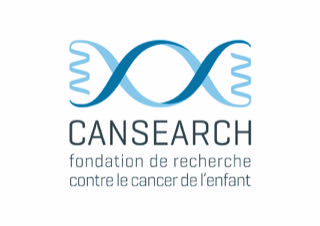Interview von Prof. Marc Ansari
2018
Interview von Prof Marc Ansari (nur auf Englisch) über die personalisierte Medizin und die individualisierten Therapien zur Heilung von Krebs.
The genetic route to chemotherapy
Sometimes the best high tech solutions are the ones that make old technology better.
Take cancer treatment.
At Geneva University Children’s Hospital, Professor Marc Ansari is using cutting edge gene sequencing tools to create individual genetic profiles for cancer patients. His aimis to make sure that each patient has an individualised cocktail of traditional drugs to ensure maximum effectiveness.
Fundamentally, most established cancer-fighting are very effective. The problem is how – and in which dose – to administer them.
And getting this right matters.
Ballpark figures suggest that between a third and a half of people in developed countries will suffer cancer at some point in their lives, while globally, cancers account for more than 16 per cent of deaths.
Chemotherapy, for example, often comes at an unpleasant cost to the patient: fatigue, hair loss, nausea and infections are routine complications. Minimising the side-effects while maximising the effectiveness of cancer-fighting drugs necessitates getting the dosages just right.
This is where Ansari’s genetic-inspiredtechniques can help.
Therapies need to be made bespoke because different people react differently to the treatmentson offer. Some patients are highly susceptible to the drug regimen’s toxic effects. Others have ahigher tolerance or process the chemicals rapidly, making normal doses less effective.
“There is too much toxicity in some people, while other people show resistance,” Anasari says.
Meanwhile, how the cancerous cells themselves react to the treatment will also vary.
So, to design the perfect treatment regimen, Ansari’s team analyses the genetics of both the healthy and diseased cells of patients.
“We have to identify which patient has which gene,” he says.
All this hinges on the buildingof database that catalogueshow individuals and cancerous cells with different genetic make-ups have responded to treatments in the past.
To that end Ansari’s organisation, CANSEARCH research laboratory, which runs research projects based at the Geneva University Hospital, has opened studies in more than 20 countries to collect as much DNA evidence as possible. They gather together DNA from across populations – people of different races often have differing responses to a given medication – and from homogenous populations with the same disease – to check how much of a genetic factor affects responsiveness to the given drugs.
“It’s quite simple to identify which patient has which gene and therefore which gene will code for which enzyme and then to see the exact dose we will have to give to the patient,” he says. “What is difficult to see is what’s going to be the cocktail to use, the type of chemotherapy drug. The precision is not only about one drug, but maybe about different drugs that we put together in order to kill that [cancer] cell.”
Developing a comprehensive database is critical to getting the best course of treatment quickly – and speed is particularly of the essence when it comes to treating children.
“Kids are constantly growing so their cells are multiplying very quickly meaning that the cancer development is very, very fast. When kids arrive at the emergency unit we have to very quickly start chemotherapy in order to control the disease,” according to Ansari.
For pharmaceutical companies, the major obstacle to individualising medicine with existing drugs is cost. Such treatments in childrens don’tgenerate much in the way of additional revenues. Which is why this sort of research is dependent on charities and public bodies, Ansari says.
There is, of course, also a role for entirely new approaches. For instance, Ansari’s team also uses a treatment that alters the genes in one type of a patient’s immune cells so that they will target the cancerous cells.
“It’s called the CAR-T cell, the chimeric antigen receptor T cell. The genetics of your immune system is modified, injecting a virus into some of your cells. The new cells will express a receptor that will target the markers that are at the surface of a cancer cell, in order your immune system will kill the cancer cell,” he says.
The cancer cells often have specific molecular markers on their surface that the modified immune cells then attack.
Unfortunately, this isn’t a magic bullet just yet. As with conventional drugs, modified immune-system cell treatments that target cancers can also have nasty side-effects – in this case they can end up attacking healthy tissue that has the same molecular flags as the cancer, triggering toxicities.
But treatment is constantly being developed and refined.
“Technology is improving all the time so we have more tools in order to analyse and to go further and to answer better” the questions posed by cancer, Ansari says. And the tools will come as a portfolio of treatments rather than as single drugs. “The precision medicine we think nowadays is still a one dimensional medicine whereas probably in a few years it will be multidimensional.”
